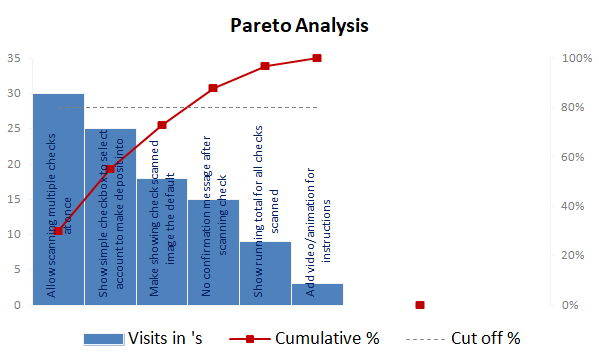Introduction
Quality is a fundamental aspect of every project. Organizations achieve sufficiency by ensuring that quality standards are observed. This is ensured by setting quality standards which guide operations and form basis for all quality evaluations. In this project, quality standards are similarly important. The following quality standards are detailed for this project (Lee, 2010).
Quality assurance refers to the act of putting in place in all necessary measures to ensure the end product of service successfully achieves its intended purpose. Basically, all sectors have set of measures in place to ensure quality standards are observed.
As mentioned earlier, the basis of quality in healthcare includes technical standards, service delivery and meeting client expectations (Cianfrani, & West, 2009). Management of operations determines level of quality associated with these aspects.
Quality is multifaceted and comprehensive. Various experts have identified dimensions which distinguish quality standards within organizations. Experts have successfully recognized several quality dimensions important in quality assurance.
Quality assurance activities may address one or more of the listed dimensions (Rose, 2005). These include: availability of amenities, service continuity, efficiency of provided services, interpersonal communication, relations between staff, as well as technical know-how and staff competence (Weber, 2009).
These define useful dimensions upon which health teams define and analyze problems within organization and measure the extent to which standards are being attained. Each of the mentioned dimensions is discussed in light of specific programs and is appropriate to service delivery.
Quality standards
Timely service
Proving quality within reasonable time is of necessity. Reasonable time in this context means that the time that those people need the services are is adequately met and when this is not possible they are duly informed in advance to ensure they are not inconvenienced. Additionally, time should be provided within the shortest time possible
Service availability
More often than, as time goes by, client becomes more reliant on the services and as such the services should always be available. To meet this requirement, the quality is desired that the service is available 24/7, without unnecessary interruptions.
Meeting specification
This is an important quality standard aimed at ensuring that the specifications requirements set by clients are observed. All work should be evaluated at completion to check if they meeting the specifications of the clients.
Effectiveness
This dimension cannot be ignored within service delivery. Overall quality is largely dependent on service delivery as well as norm effectiveness. Basically it address the question, “Does service delivery procedure if correctly applied result into desirable outcome?” and is the delivery approach the most technologically appropriate.
Effectiveness issues form the pillars upon which managers/administrators reforms and adapt them to locally applicable conditions. It involves comparison of potential benefits to detriments. For instance how effectively will changing the machines used impact on service delivery.
Interpersonal Relations
Interpersonal relation’s dimension defines the interaction between service providers, clients, as well as other stakeholders. Good relations are based on trust and credibility which arise from demonstration of respect, information confidentiality, and responsiveness to client needs, and empathy (Paul, 1998).
Effective listening and communication should be encouraged as a way of bridging rapport barriers. Clients who are treated inhumanely during their visits are likely to desist from visiting the facility or even seek services from the place.
Continuity
Continuity dimensions refer to the receipt of a complete range of services by patients without unnecessary interruption or cessations. There is need for service provision in a continuous manner and clients should have routine access to service.
Quality Testing
The dimensions listed as well as others which may not have been highlighted can only be achieved if quality testing is regularly run. Testing can take two forms including client interviews and quantitative analysis. Client response via interviews is a reliable means of accessing service delivery (Cianfrani, & West, 2009).
Similarly, quantitative analysis offers an avenue for factual evaluation of the level to which quality standards are being observed. Pareto analysis is used in evaluation of problems within this case study (see chart below).

Given that quality is an important factor in both successfulness and longevity of organizations, it is important that each organization develops quality control tools. Pareto analysis is one such tool and is based on 80/20 rule originally developed by Vilifredo Pareto, who noticed that only 20% of the population holds 80% of the society’s wealth.
Pareto analysis basically asserts 80% of the quality issues with services or products are often caused by only 20% of the 20% of the problems in services and goods. Logically it is necessary to separate the ‘crucial few’ issues from the many that are trivial.
This means that the few issues that are crucial to functioning can be solved to hugely benefit the end service quality. Upon problem identification, the 20% which cause 80% of the problem can be eliminated or remedied appropriately and hence service quality efficiency is regained.
Conclusion
In conclusion it is important to note that most of the issues arise from allowing multiple scanning checks at once and hence this is the lead problem to be addressed.
The Pareto has helped in identification of the problems which should be prioritized in addressing quality issues within the organization. It is basically a reinstatement of the importance of adopting quality tools in managing quality within organizations.
References
Cianfrani, C. A. & West, J. E. (2009). Cracking the Case of ISO 9001:2008 for Service: A Simple Guide to Implementing Quality Management to Service Organizations (2nd Ed.). Milwaukee: American Society for Quality. pp. 5-7
Lee, V. (2010). Quality Management. Pharmaceutical Research Journal, 17(3), pp. 251 -262.
Paul, H. S. (December 1998). “Sales Process Engineering: An Emerging Quality Application”. Quality Progress, 59–63.
Rose, K. H. (2005). Project Quality Management: Why, What and How. Fort Lauderdale, Florida: J. Ross Publishing. p. 41.
Weber, H. (2009). Roots causes of quality related malpractices. Journal for Healthcare Quality, 38(3), 561 -572.